Autism Spectrum Disorder (ASD) is a condition that majorly impacts communication, social interaction, behavior, interests, learning abilities and perception of things in children. It varies in symptoms and abilities among different individuals which may affect social skills development and positive peer relationships. When teaching social skills to children with autism, common methods involve using visual aids, structured play demonstrating appropriate behavior and encouraging positive interactions. Peer modeling and social scripts are other techniques for teaching these skills among children with autism.
Social skills are essential for interaction with others. They include communication, empathy, listening actively and recognizing cues. Developing social skills improves relationships, teamwork and overall quality of life. Effective social skills help individuals navigate situations successfully to build healthy relationships with family, friends and coworkers. They promote collaboration and communication in group settings while also benefiting well-being, in personal and professional life.
Starting at 2 years and older, children can take on various play skills. They cooperate, collaborate, negotiate, offer, invite others to play, give props or toys, and ask for things. They pretend by putting themselves in the shoes of the story’s characters, speak in a different voice to represent the character, pretend to be an animal. For example, a three-year-old may put on a blanket and hold it over his head and say: ‘This is what a chef wears.’ They represent, for example, by using their hand to pretend to tuck a doll into bed or participating in a group pretend play.
The way as toddler or little one plays gradually changes through 6 stages during early childhood, each of which contributes to your child’s development. All stages include exploration, creativity and fun! The following table enlists and explains how children play changes by age as they grow and develop social skills:
Age | Type/Stage of Play | Activity |
0-4 months | Infant Play | Making body movements with arms, hands and legs |
4 months – 2 years | Solitary/Toy play | Playing alone |
2 years | Spectator play | Suspecting others while playing Does not play with other kids |
2-3 years | Parallel play | Playing alongside other kids Does not interact with other kids |
3 years+ | Interactive play | Interacting with other kids while playing |
4-4 years+ | Cooperative play | Playing with other kids Showing interest in the same activity with other kids |
1. Solitary play/Toy Play: Children learn how to play with toys at a very young age (around 9 months old). For example:
2. Spectator play: Children suspect other kids while they are playing but does not play with them.
3. Parallel Play: Child plays alongside other kids but does not engage in play with them.
4. Following two-step directions: Kids can complete tasks with two steps (such as ‘Get your shoes and put them near the door’.
5. Interactive play: Child likes to interact with others during play, but this interaction is not too much at this point. They might be playing the same activity as other kids but not interacting with them during the play. For example, several children might be climbing on the same piece of playground equipment, but some might be climbing one way, others another.
6. Cooperative play: It includes situational interest in the activity with cooperative interest in other children who are playing the activity together. If a child is playing with other children, the most they can do is join in cooperative play where they need to work with someone else to achieve a common goal e.g. I build the train track you bring the trains, or I will dig the sand you put it in the bucket so we can make sandcastles.
7. Imaginative Play/Pretend play: Make-believe becomes more complex. Children invent play themes, acting out scenarios such as playing house or superheroes; creativity, awareness and problem-solving are encouraged.
8. Children complete sentences in picture books they know by heart – either by responding when you stop and ask what’s missing, or on their own, as they are reading the story to themselves. Over time, this helps them to learn vocabulary and grammar, while building comprehension.
9. Kids become right- or left-handed (Conscious Domination): This is the first sign of conscious hand dominance, and when they start to become more adept at small movements with their hands.
Play and the work should be abundant opportunities for enjoyable learning. Celebrate and embrace different play opportunities – this is how to fuel your child’s development!
Children can recognise when someone is sad, happy or upset. They learn to objectify their feelings and ask how someone else is feeling. Children grasp the concept that they must communicate differently with some adults than with other adults (such as their friends versus their parents).
They also learn to modulate their tone of voice and choice of words to suit different contexts. Children are better able to perceive and articulate how others are feeling. They start relating to others and begin to grasp that everyone has feelings to make connections with peers and the broader world.
Remember, nurturing these emotional skills helps children navigate their feelings and build healthy relationships.
These skills are essential in children development. Here are examples of how children over 2 years demonstrate these skills: Request Information: Kids ask about a general environment. For example, they can ask why ‘the sky is blue’ or ‘where do birds go at night’.
Keep in mind, practising these skills with everyday interactions helps children to be more competent at expressing their ideas.
Children development depends on the ability to tackle and solve problems. Here are few instances of how small kids can show these abilities:
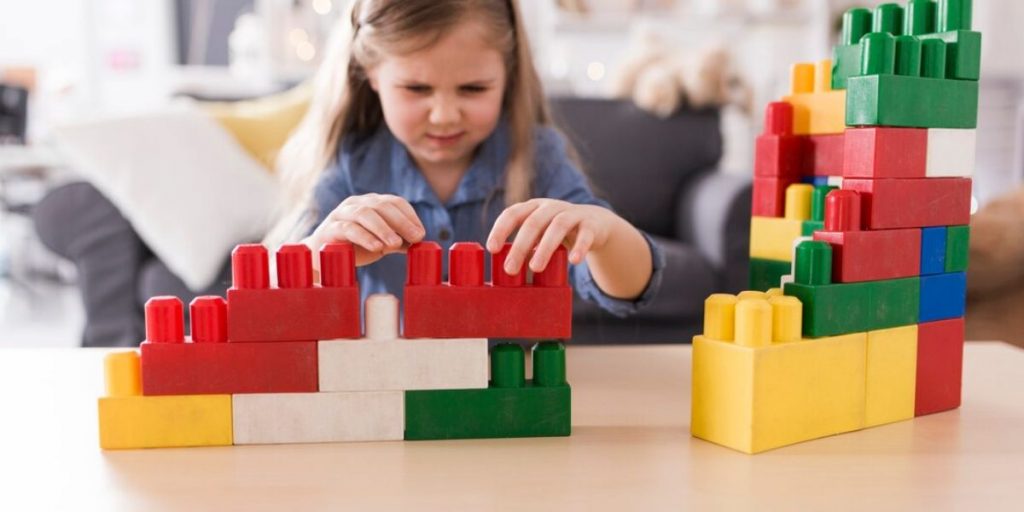
1. Parents and Carers: First teaching moment – ‘The way you behave sets precedents for social learning. Young children see what adults do, they hear adults talk about experiences, they receive etiquette, empathy and the basics of conflict from parents.’
2. Teachers and Educators: Teachers facilitate and encourage social relationships in the classroom among all the students. They promote group play, collaboration, and communication. Teachers employ socio-emotional learning (SEL) courses to educate social skills and emotional control.
3. Playmates and friends: Fun loving connections with peers help in play-based learning in kids. Sharing, taking turns, and problem-solving: Peer interactions foster social growth.
4. Therapists and Specialists: For kids with special needs, professionals such as social workers, psychologists, occupational therapists, and speech/language therapists offer focused therapies (social skills therapy). Children and therapists work together to improve social interaction and communication.
1- Standardized Assessments: Standardised assessments are fundamental to deciding what capacities to teach autistic children. Such assessments help determine what each person needs and guide intervention strategies.
Here are a few common assessments:
ASSESMENT | PURPOSE/DESCRIPTION |
Autism Diagnostic Observation Schedule | This is a complete diagnostic assessment for ASD that tests for social interaction, play and communication skills. |
Kaufman Test of Educational Achievement-II: | Evaluates reading and writing. It also provides information about the demands of learning. |
Vineland Adaptive Behavior Scales–II | It measures socialisation, daily living and communication skills. Helps reorient interventions to the specific difficulties and strengths of the individual. |
Sensory Processing Measure: | Evaluates problems with sensory processing. This assessment is helpful in comprehending sensory issues that children with ASD face. |
Childhood Autism Rating Scale | Rates the severity of autistic symptoms. It shows the areas that require skill development based on observations and feedback from parents and caretakers. |
Wechsler Intelligence Scale for Children | Gives details regarding the strengths and shortcomings of a child’s intelligence. It also helps to evaluate cognitive skills e-g problem solving. |
2- Informal Assessments: By means of formal and informal evaluations, it is important to figure out what types of abilities are important to educate kids with autism. Formal assessments are standardized evaluations by professionals, who are the ones who administer them, but informal assessments give notable information about individual needs. Here are some informal methods to assess social skills:
• Ask Your Child: What do you like to learn about? What do you like? What is hard for you? Just the way you might got down a to-do list, now draft a list of things that your child does too much – or too little – of.
• Observe and Make List: Make note of the places they need support and training – or where they often appear to be stumbling. What things are your child struggling with? What things can they even do, and what things seem unattainable? Just the way you’d formulate a grocery list, draft a list of things your child oozes – purposefully or unconsciously.
• Online Checklists and Chore Charts: An easy way to determine who is responsible for which chores is to research age specific chore lists. Chore checklists easily list the chores at specific milestone ages. Check out Ready Set for School online for checklists at the current age of your children.
These informal assessments help define the needs of a child and inform teaching plans that are responsive to those needs.
Children diagnosed with ASD frequently struggle with social interaction and communication, and they may also display regressed or limited interests or behaviors. The following are some particular social challenges that people with ASD encounter:
Verbal communication challenges like delayed speech and language development as well as difficulty expressing emotions and ideas. Non-verbal Communication challenges such as restricted eye contact and trouble reading nonverbal clues including gestures, facial expressions, and body language.
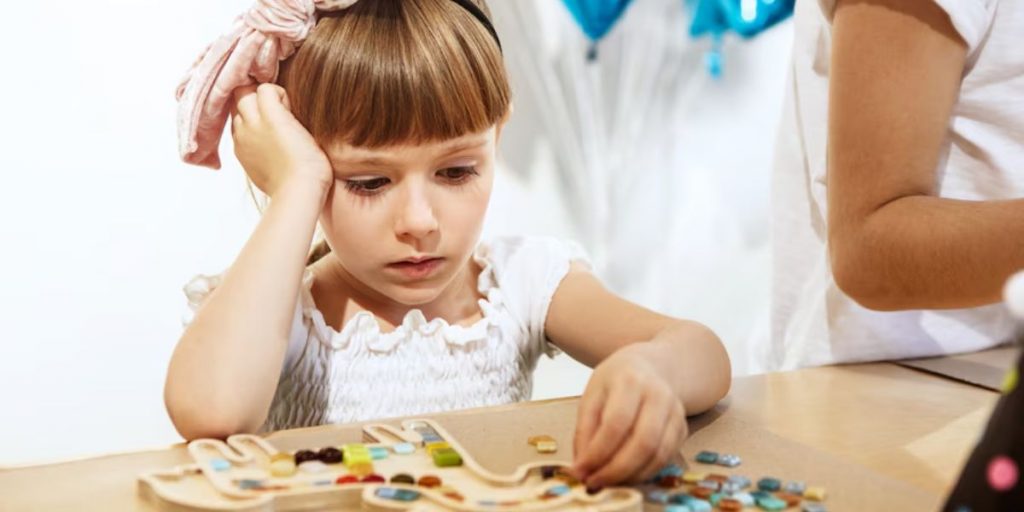
Lack of empathy (Difficulties in comprehending and sharing others’ feelings), lack of understanding of social cues (Difficulty in recognizing social norms and proper behavior), repeated and limited Behaviors (Participating in hobbies or repeated activities in place of social contacts), Increased Stress or Anxiety in Reaction to routine changes (Difficulty adjusting to novel circumstances or unforeseen incidents).
Children with ASD require specialized care and socialization tactics to flourish in social situations since these challenges affect many facets of socialization.
For a long time, positive reinforcement has been used as a non-punitive means of rewarding good behavior and promoting it. Children with autism may benefit most from this. Autistic children frequently lack comprehension of expectations and the reasons behind them. Parents and educators have the power to influence behavior and foster desirable social skills by praising and rewarding prosocial behavior. Here are some ways to strengthen social skills and constructive behavior:
• Find a good reinforcer- Reinforcers are classified into:
Primary Reinforcers: Stimuli that are natural, immediately rewarding and need no learning. E.g. Food, water, sleep, warmth and physical activity etc
Secondary Reinforcers: Also called “conditioned” reinforcers and these don’t provide immediate satisfaction. E.g. toys, electronics, tokens, money
• Reward the desired behaviour- It’s better to reward it in five seconds or less.
• Try various reinforcers- This can maintain attention and keep the child on task for longer.
• Exchange and replace reinforcers- See if there are other ways to deliver a particular kind of reinforcement – frame a behaviour differently. If you think of reinforcers you might use on your exchange list, remember that they are only ideas for now.
• Reverse the use of reinforcers gradually- Once you have successfully completed a given behavior, back off the use of reinforcers. You need to eventually reach a point where the behavior is established and requires no more reinforcement.
• Have patience- It takes time for positive behavioral changes to take hold. They need practice, patience, and work.
Secondly, to bolster the social behaviours, play to the child’s strengths. All the children whom I have worked with have an area of specialisation, an intense interest or a passionate topic they are invested in. When you acknowledge this in a social context, you give children with autism a way in the social interaction. Perhaps some of the initial awkwardness of the social engagement relaxes as they perceive that they know something that the person will enjoy hearing about.
Practicing Play greatly facilitates the development of unique talents and potentials in a child with ASD. Here are a few tips on engaging autistic children in their practice play:
• Exploratory Play: As you’re completing day-to-day tasks, encourage your kid to try out different textures, shapes and objects. Let children feel water in the bath, for example, or let them explore different material textures while you’re folding clothes.
• Cause/effect Play: Collect toys or games that facilitate ‘outcomes’ to stimulate fun. Buttons, bubble-blowers, and on/off switches are fun to do.
• Toy Play: Help your child to learn the right way to play with toys. Practice building with blocks, driving a toy car and talking on a phone.
• Pretend play: Do dramatic play with you, pretending to drive a car or play doctor to break down pretending to a few steps. Use visual supports and/or written instructions to help organise pretend play.
• Role-Playing: Act out favorite stories or scenarios together. Encourage turn-taking and sharing roles. The key: play is a way to learn and practice social skills, so join your child in the activity, help him succeed while creating challenges, then
It’s a good way of helping children with ASD to learn social skills. This is how it might work:
• Positive Reinforcement: Reward a kid when he/she demonstrates a desired social behaviour, such as sharing or taking turns. children who receive praise from a parent are more likely to understand what is expected of them and to persist in exhibiting positive social behaviour.
• Precise Praise: When giving praise, make it specific. ‘Good job’ supporting your mom with the dishwasher is not as helpful as ‘I really noticed how you shared your toy with your friend.’ Focus on a specific social skill they used.
• Praise both ways: Spoken and visual cues. You can accompany verbal praise with a smile, a touch on the shoulder, or a thumbs up.
• Be Consistent: Give your youngster praise every time they learn a new skill.
Always notice good things that you children do and tell them. Praise them when you notice them. Make it a habit to notice what they do well and to regularly praise them for doing it. If the only time they hear your voices is when you’re criticising them for something they did wrong or failed to do, they’ll tune you right out. Flip it around and find something good your child does four times more often than you tell them about something they did wrong. You can follow the following strategies to do so:
• Awareness: Let your children know that you are noticing and observing their good behavior every single time.
• Verbal and physical praise: When your child does something good, always praise them. Praise should not always be verbal but physical praise is important as well. Do, Thumbs up, clap, pat, hug and kiss your child when they behave appropriately.
• Have a check on your child frequently: Children should not be left alone for more than 10 minutes. Always keep a check on what they are doing after every 10-15mins.
• Don’t forget to appreciate little things: Appreciate little things that your child does even if it is a slight change (good behavior) in the way they greet and say Hi to others.
• Avoid expecting more: Do not expect more from your child when he/she is learning new things. For example: If they have just learnt how to play nicely with other kids, do not expect them to do the same every single time they interact with other kids.
• Reward: Rewarding your child’s good behavior is so important. The best reward should be a parent-child play activity. So, whenever they exhibit a desired behavior, just take them to a park or point nearby where you can have quality time with them playing their favorite games and having fun.
Role-play is one way of practicing important social skills (in a safe place) for the child with autism. Here, role-play tasks for kids with autism, adjusted for a younger child’s capacity:
• Make-up situations: Think up a series of situations that your child might encounter in the real world. This might be him requesting a fish-finger from another child/adult or asking to be allowed to play with their toys or asking a stranger to let him past. The situations need to be adapted to the world in which your child lives.
• Model and practice: Role-play what your child is thinking. Play it out for them. Give them a script. Direct: ‘Right, we’re going to role play. We’re going to have the pretend event that you would take your best friend Meg’s turn on your bike.’ Role-play conflict with another kid. Then after role-playing, help them put the event into words. Reward good behaviour during and after the role-play. Reward your child for his/her ‘good’ social behaviour.
• Use visual prompts: Use visual prompts: Provide visual supports (or some other type of visual prompt) for the steps in a role-play (such as a social script, prompt cards, visuals embedded in the dialogue, drawings).
• Practise in different settings: Learn how to initiate and respond to appropriate social behaviour in a variety of situations – from greeting to problem solving.
• Rehearsal: Recreate various scenes that include greeting people in the neighbourhood, in the home setting and in the school setting.
A crucial thing here is that role-playing helps kids to transfer the social skills the children practise back into the outside world. The key is the encouragement and staying with the practice!
SST is an empirically supported intervention approach designed to provide individuals with autism the tools they need to interact and communicate with others in a positive way. It focuses on improving and growing social, emotional, and communication skills—all of which can be difficult for those with Autism Spectrum Disorder (ASD). SST is typically done either individually or in groups and is commonly supplemented with classroom practice with learning support.
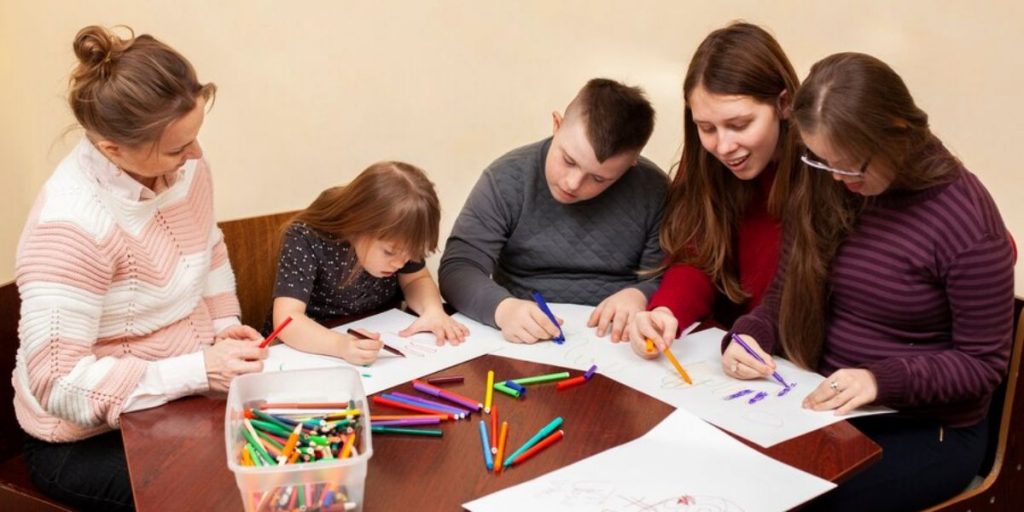
Specific Targeted Skills: SST encourages the development of accuracy and efficiency: people can engage with others while avoiding conversation. The goal is always to improve specific social skills, especially those that are hard for people with ASD. In particular, the relevant skills are:
Who can implement SST?
SST is a process that may be implemented by a range of ‘professionals’ (i-e, paraprofessionals, counsellors, psychologists, teachers, special educators, speech‑language pathologists) at school. Parents and other family members can support SST efforts by promoting social skills at home.
Practices Based on Evidence:
SST satisfies the requirements for evidence-based treatment as studies have demonstrated its efficacy for students with ASD ranging in age from preschool to high school. It covers behavior, play, social, communication, and cognitive result.
Recall that SST is vital for assisting people with autism in developing critical social skills and effectively navigating social situations.
Children with ASD can benefit greatly from social storytelling as a means of teaching social skills. These stories offer structure and aid in understanding social circumstances for people. These stories first created by Carol Gray, are meant to give kids something to practice getting them ready for real life circumstances. Let’s examine some excellent strategies for telling and using social stories:
How to Write a Social Story: Basic Tips
• Know Your Audience: Understand the specific need, interests and challenges of the child for whom you are writing the social story. Consider their age, language abilities and individual preferences.
• Focus on a Specific Situation: Address a particular social situation that the child may find challenging. Be specific and clear in your description.
• Use Positive Language: Frame the social story in positive terms, emphasizing positive behaviors rather than focusing on what not to do. Highlight the benefits of positive behavior.
• Keep it Simple: Use clear and simple language. Avoid complex sentence structures and ambiguous terms. Break down the information into smaller, manageable chunks.
• Visual Supports: Include visual supports such as pictures, icons and drawings to enhance the understanding. Many children with autism are visual learners and visuals can make the information more accessible.
• Be Concrete and Specific: Clearly outline the expected behaviors in the given social situation. Use concrete examples and avoid vague or abstract language.
• Consider the Perspective of others: Help the child understand the thoughts and feelings of others in social situation. This can foster empathy and a better understanding of social dynamics.
• Repetition: It is often beneficial for children with autism. Reinforce key points and concepts throughout the social story to help with retention and generalization.
• Personalization: Make the social story more meaningful by incorporating the child’s name, interests and preferences. This can increase engagement and relevance.
• Review and Revise: Social stories may need to be revised over time as the child’s needs and understanding evolve. Regularly review and update the social story to ensure its continued effectiveness.
• Encourage Role Playing: Practice the scenarios outlined in the social story through role-playing. This hands-on approach may enhance comprehension and retention.
Examples:
Adapt social stories to the specific requirements and interests of your child. Remember that each child is unique and what works for one may not work for another. Tailor the social story to the specific needs and characteristics of the child and always be open to make adjustments based on feedback and observations. Social stories are very important as they provide a structured way to teach essential social skills, boost confidence, and improve interactions for children with ASD!
If you have a child with Autism Spectrum Disorder (ASD), you already know how important visual tools can be when it comes to teaching social skills. A picture is worth a thousand words because it is tangible, and it makes social expectations crystal clear and predictable. Use visual supports to your advantage to teach important social skills. Here are some tips.
• Scheduling in Pictures: Make a timetable (visual diary) of your daily activities and habits. Draw a picture or symbol for each job (getting ready, brushing teeth, heading off to school, etc). Children can anticipate change and what is happening next with the help of visual timetables.
• Prompt cards or Visual Cues: Remind kids of some social rules with a clue. For example, show them a card with a picture of two kids sharing to encourage actual sharing while playing.
• Lists (e.g., checklists of social behaviours) and visual reminders (e.g., a graduation clock with the hours of the day marked off and a ‘class bell’ that rings at significant times) are valuable tools. Make social skills checklists (e.g., maintain eye contact, wait your turn).
And remember that photographs, diagrams and other visual aids help you get your message across enjoyably, reduce anxiety and give the child with ASD the tools to cope more adeptly with the social situations in his or her life.
In PMII, peers without impairments are systematically taught how to include learners with ASD in meaningful and constructive social interactions. These methods are effective in teaching children with ASD all social skills that are necessary. These tactics entail interacting with peers who are generally developing to assist students with ASD in learning new social, behavioral, and communication skills.
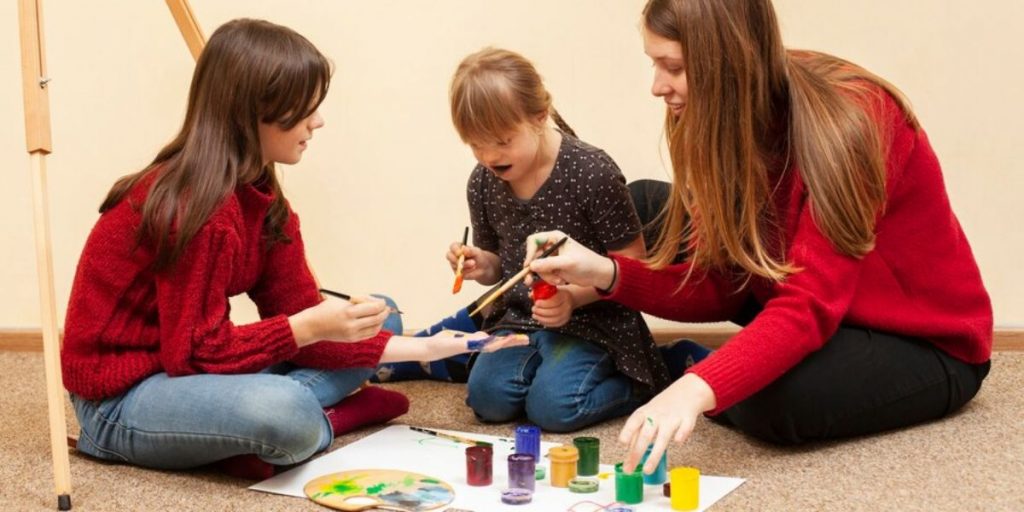
Principal Elements of PMII:
• Peer training: Enjoin peers on how to interact with and assist their ASD classmates.
• Positive Reinforcement: To promote desirable behaviors, peers employ successful teaching strategies and positive reinforcement.
• Natural Settings: PMII occurs in everyday contexts (classrooms, play areas, etc.).
Benefits of PMII:
Examples of PMII Activities: Child-Adult Conversations (Adults facilitate conversations with children), Understanding Perspectives (Teaching children to recognise and respect the perspectives of others), Problem Solving (Engaging children in collaborative problem solving). Peer Tutoring (Peers providing peer-to-peer help with academic tasks), Social Play (Cooperative classmate play), Communication Skills (Scaffolding conversations, turn-taking, and sharing).
PMII promotes social competence while strengthening friendships and social development in children with ASD.
People with autism of all ages can regularly practice their social skills with peers who are typically matched or with each other in social skills groups. Typically consisting of two to eight kids, social skills groups are led by an adult who teaches the kids appropriate behavior with kids their own age. Children’s social, communication, and problem-solving skills can all benefit from them.
Effective Social Skills groups should:
Examples of Social Skills Addressed in Groups: Conversation Skills (Initiating, maintaining, and ending conversations), Friendship Skills (Sharing, taking turns, and cooperating), Problem-Solving (Strategies for resolving conflicts), Emotion Recognition (Identifying and understanding emotions).
Remember, social skills training groups empower children with ASD to build meaningful connections and navigate social situations more effectively.
For students with ASD to manage themselves independently and conduct themselves appropriately in diverse situations, self-management therapies are essential. Self-management interventions involve teaching students with ASD to:
One useful approach (often used for children with ASD) is to promote ‘friendship-building’, which foster good relationships in the classroom and allow children to practise social skills.
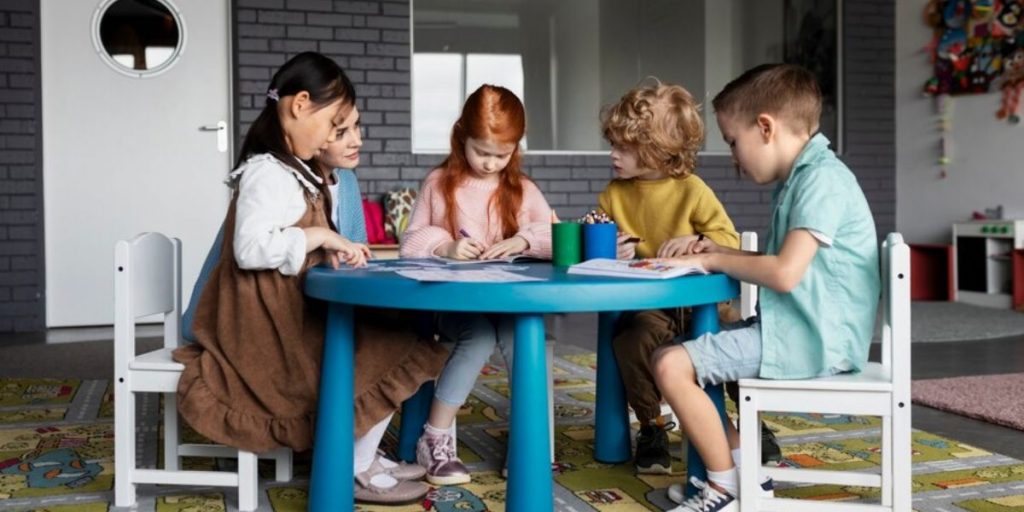
Here are some effective approaches:
Integrated Play Groups:
It is critical to remember that, like other children, what children with ASD require to be supported to engage productively in social situations, and to form friendships, is individual. Informal friendships and individually tailored targeted interventions provide opportunities to maximise participation in naturally occurring social situations for children with ASD.
ABA therapy or Applied Behavior Analysis is highly advised for kids who have symptoms that fall under the Autism Spectrum Disorder (ASD). Let us examine how ABA treatment helps ASD kids get accustomed to social interactions.
ABA treatment improves social skills and has a positive effect on behavior, communication, and cognitive outcomes. Remember that ABA therapy aids in the development of social skills in children with ASD that will benefit them in all aspects of their lives, resulting in happier and more meaningful relationships.
Teaching social skills to the children with ASD can be a complex process as it requires play, problem-solving, social-emotional development and discussion. Thorough lesson planning is required in order to determine which skills need to be taught, an informal assessment should be conducted to verify the lesson plan, and standardized testing is warranted. Specialized care and socialization strategies are the key catalysts that facilitate a blissful flowering of the children with ASD because they are up against some unique social barriers, such as vocalization, social interaction problems. There are a multitude of social growth strategies available, which include play practice, praise, role-playing, social skills training groups and ABA treatment. To foster the social development that autistic children, need to learn in order to thrive in social settings, one must find a means to help these children with their social interactions. For example, some children with ASD need encouragement to be able to make and sustain meaningful relationships, while other children with ASD need to become more confident with initiating conversations with people. When a child with ASD creates a meaningful human bond by reaching out to another individual, that is a powerful opportunity for fostering a child with special needs. We can assist the child to utilise relevant coping strategies, in order for them to lead a successful and happy life.
Charlop, M., Lang, R., & Rispoli, M. (2018). Play and social skills for children with autism spectrum disorder. New York: Springer. doi: 10.1007/978-3-319-72500-0.
Dundon, R., & Scott, C. (2019). Teaching social skills to children with autism using Minecraft®: A step by step guide. London: Jessica Kingsley Publishers.
Kaat, A.J., & Lecavalier, L. (2014). Group-based social skills treatment: A methodological review. Research in Autism Spectrum Disorders, 8(1), 15-24. doi: http://doi.org/10.1016/j.rasd.2013.10.007.
Locke, J., Williams, J., Shih, W., & Kasari, C. (2017). Characteristics of socially successful elementary school-aged children with autism. Journal of Child Psychology and Psychiatry, and Allied Disciplines, 58(1), 94-102. doi: 10.1111/jcpp.12636.
Ratcliffe, B.R., Wong, M.G., Dossetor, D.D., & Hayes, S. (2015). The association between social skills and mental health in school-aged children with autism spectrum disorder, with and without intellectual disability. Journal of Autism and Developmental Disorders, 45(8), 2487-2496. doi: 10.1007/s10803-015-2411-z.
Shaul, J. (2016). Our brains are like computers!: Exploring social skills and social cause and effect with children on the autism spectrum. London: Jessica Kingsley Publishers.
Simpson, R., & McGinnis-Smith, E. (2018). Social skills success for students with Asperger syndrome and high-functioning autism. Thousand Oaks, US: Corwin.
White, S. (2011). Social skills training for children with Asperger syndrome and high-functioning autism. New York: Guilford Press.
Get exclusive access to free downloadable
ABA tools and resources plus be the first to know about our special offers!
© 2009 – 2025 Special Learning, Inc – All Rights Reserved
Parent Waitlist Program
November 02, 2023 | 12pm-1pm PDT

Being an RBT for me was extremely fun because where were you going to find a place where you can be completely silly without having to worry what people thought about you? This was the only job that made me feel like I could make a dramatic difference while being myself.
I also liked to be surrounded by people that had the same goals of wanting to help kids and the teamwork made the job much easier and more enjoyable.
Change and progress was the ultimate goal for our kiddos. The early intervention program was seriously only a miracle because I saw changes in the kiddos that from day one, you wouldn’t even recognize who they were.
Changes from being able to utter 3-4 words where they can only make a syllable from when they started, the behavior decreases in which kiddo that used to engage in 30-40 0 self-harm to only half, learning how to wait during games, table work where they use to swipe and drop to the floor if they had to.
My favorite was when the parents would tell us what amazing progress they were making at home. I used to tear up and felt for these parents so much because it was already difficult for them and now, they can trust and rely on ABA and the therapists knowing their goal was ours.
By Emma Rogers, BA, RBT

This is an independent SL Hotline that is part of our VCAT service. This hotline has no connection with any other association or membership group.
Got a question you want a BCBA or other ABA expert to answer?
Fill in this form and one of our professionals will handle your question quickly and confidently. You can expect a response in 24-hours or less.